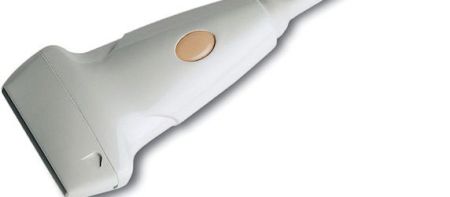Ultrasound-guided delivery of platelet-rich plasma (PRP) improves functionality and reduces recovery time in athletes with degenerative disease in their tendons, according to a study presented today at the annual meeting of the Radiological Society of North America (RSNA). Not only does the procedure get the athlete back in training quickly, but it is a very cost-effective treatment at around $81.
In PRP therapy blood is collected from the patient and spun in a centrifuge to separate the PRP from other blood components. The PRP is then injected under ultrasound guidance into the target area, where it stimulates cellular growth and healing. As the procedure is autologous, it carries less risk, and does not affect drug testing
"PRP enables regeneration of the tendons and reduction of pain thanks to its regenerative and anti-inflammatory properties," said study author Alice La Marra, MD, radiology resident at the University of L'Aquila in Italy.
Dr. La Marra and colleagues recently evaluated PRP in 50 athletes who had degenerative tendinosis in the Achilles tendon, which connects the calf muscle to the heel bone, and 30 who had tendinosis in the patellar tendon, which connects the kneecap to the shin bone. Tendinosis is common in athletes and is caused by a repeating cycle of damage and repair. The Achilles and patellar tendons are common sites of tendinosis.
The patients underwent ultrasound-guided PRP every 21 days for a total of three treatments. MRI was performed before the procedures and 30 days and one year after the last treatment. The researchers used standard measures of functionality and pain to determine the severity of the tendinosis.
Patients with tendinosis of the Achilles tendon saw an overall improvement of 80 percent in pain and 53 percent in functionality after the PRP treatment. Those patients who had tendinosis in the patellar tendon saw a 75 percent improvement in pain and a 50 percent improvement in functionality.
The signal intensity on MRI, which provides a measure of tissue integrity, normalised in 90 percent of the PRP patients.
"Our study showed that in patients who underwent PRP treatments, there was an improvement of functionality, a decrease in pain and a normalization of the signal intensity seen on MRI," Dr. La Marra said. "Therefore, our experience proves that PRP infiltration may be a good therapeutic alternative for the treatment of Achilles and patellar tendinopathy in athletes."
Current treatment for degenerative diseases of these tendons is based on the severity of the lesion and the age and activity level of the person, Dr. La Marra said. Common treatment options include physical therapy, corticosteroids and surgery.
"Our study showed that PRP is the better option. Compared to the other therapies, it allows a faster and more efficient recovery," she said.
In addition, Dr. La Marra pointed out that the use of corticosteroids is risky for professional athletes, as it can result in failed drug tests.
"Considering the results obtained in recent years, we hope that the use of PRP in tendinosis becomes routine for patients who practice sports activities, even at a competitive level," she said.
Co-authors are Carlo Masciocchi, M.D., Antonio Barile, M.D., Luigi Zugaro, M.D., Silvia Mariani, M.D., and Lorenzo Maria Gregori, M.D.
Claire Pillar
Managing Editor, HealthManagement
Latest Articles
Ultrasound, Platelet-rich plasma
Ultrasound-guided delivery of platelet-rich plasma (PRP) improves functionality and reduces recovery time in athletes with degenerative disease in their te...



























